- Tata Motors
- Global NCAP
- Safer Choice Award
- Tata Safari
- Tata Harrier
- Vehicle Safety
- Passenger Cars
- SaferCarsForIndia
Innovative G-Python
- By Bhushan Mhapralkar
- October 08, 2021
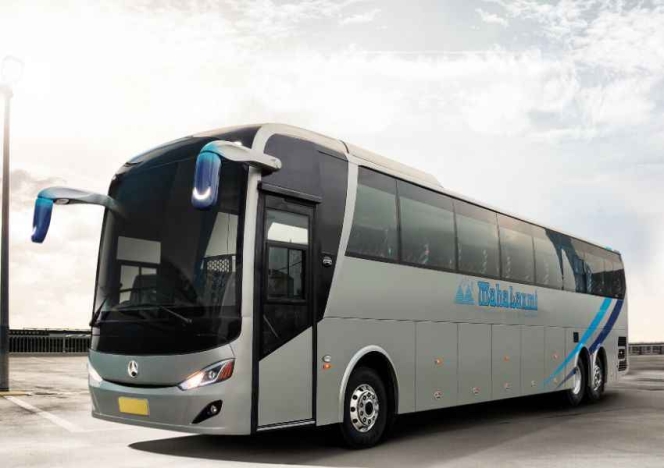

A good 15m long, the Mercedes-Benz OC 500 RF 2542 has two-axles at the rear and one at the front. Its name suggests it to be German. It is therefore perhaps that a European influence is evident from the smooth surfaces and well-defined lines of the G-Python’s exterior design. The standards of fit and finish are good. A sense of sleek and muscular build apparent from the vehicle’s exterior design, the G-Python, according to Kukreja, draws inspiration from the python’s prowess and size. He drew attention to the fine curves and added, “Look carefully at the headlamps; they will remind you of the eyes of a python. They shine like diamonds”. Reflecting luxury, style and an ability to stand out, the sleek and sweeping headlamps of the G-Python coach body work make an interesting part of the facia. The facia in turn has a large windshield with a black theme patch at its bottom. The pasted windows and tall sides of the G-Python nicely complement the facia design, highlighting a good sense of proportion in the process. Like a fully grown python – a reticulated python (Malayopython reticulatus) can reach over 6.25m in length and is termed as the longest snake in the world – the G-Python luxury coach design does appear long and attractive on the Mercedes-Benz multi-axle chassis.
Finer detailing
Powering the Mercedes-Benz OC 500 RF 2542 is a 388 hp, six-cylinder Mercedes-Benz OM 470 Euro VI 10.7-litre diesel engine situated transversely at the rear. It is so located that it feeds power to one of the two rear axles. Its access is governed by an engine lid at the rear. When viewed from a three-fourth angle, the rear accommodates the engine compartment access lid nicely in a large black patch. Replicating the colour theme of the facia (there is a similar albeit smaller black patch under the windshield), the large rear patch of black cleverly hides the enormity of the coach structure. It is no doubt tall and fairly enormous when viewed against a car or a van! On either side of the black patch are sleek and stylish LED tail lamps. “True to our penchant for aerodynamic styling and discreet elegance, the G-Python coach design is based on a modular concept,” said Kukreja. “As much as the exterior, there’s much attention that has gone in the designing and building of the interior too,” he added. Containing diffused lighting, a warm shade of blue and white, the interior exudes a touch of luxury and elegance, much the same way the exterior does.

Employing CR tubes and fire retardant FRP material in its construction, the interior of the G-Python coach design offers good space between each seat row. The seats of the reclining variety are designed and positioned to offer maximum comfort and leg room for passengers. This makes for a relaxing atmosphere. Cabin isolation is brought up to speed with much use of insulation material. “There’s been a good deal of innovation that has gone into the noise isolation of the cabin,” averred Kukreja. With maximum luggage compartment space, easy to operate functions and a long list of optional features like heating, AC, LED screens, mobile-laptop charger, metallic paint, infotainment system, pantry and chemical toilet etc., the G-Python, when it comes to features, offers almost all the bells and whistles. “From the very inception of the design, we made sure that we could accommodate each and every feature that a coach operator could ask for,” Kukreja remarked. “The colour combination and graphics is optional.”

Stating that the attention to European standards has ensured superior built quality, Kukreja said, “From the safety point of view, we have made every effort to exceed the regulatory requirements.” The G-Python coach design employs a laminated glass windshield. The pasted windows on the sides are of the toughened variety. The emergency door has been situated at the rear. Conforming to the bus code, the G-Python seeks proximity to a European integral coach design. It is capable of seating 53 passengers. Available in ‘semi-sleeper’ guise as well, there are no plans to introduce a ‘sleeper’ version as of now. “We may offer a ‘sleeper’ version in the future,” said Kukreja.



An eye for quality
Built with close attention to quality at Guru Ram Dass Body Builders’ Sonipat facility in Haryana, the G-Python coach body design flaunts a super strong reinforced structure that is crash resistant. It is backed by a pan-India after sales support. Offering ease of maintenance and service through easy accessibility to key aggregates and parts, the luxury coach body design is subject to regular updating, according to Kukreja. “This is in line with our philosophy to keep improving a design and incorporate new developments in bus/coach body design and development,” he added. Explaining that his company’s modern plant at Sonipat has state-of-the-art paint booth, shearing and press brake machines, an R&D centre, shower booth and an FRP moulding facility among others, Kukreja said, “The build quality of the G-Python is in line with the company’s quality management system and regulatory requirements.”

Stressing on a robust quality control mechanism in place at GRD’s Sonipat plant to ensure thorough inspection of every material that is procured and every weld joint that is carried out on the structure, Kukreja expressed, “Trained professionals use calibrated measuring instruments and various other machines as part of the quality management system.” “There’s a ‘Red Table Area’ in the Sonipat plant where the selected and reject material are segregated,” he added. Explaining that the G-Python will complement the existing G-Dolfino bus body design, Kukreja averred, “They are more or less parallel offerings.” “The G-Dolfino was launched in 2019 and the G-Python was launched in June 2021,” he said. Asked if the G-Python coach body design would fit a 12m long front-engine bus chassis like the BharatBenz 1624, and Kukreja was quick to answer, “Modifications in the floor structure should make it possible.” Whether it would be done at once? Kukreja is not in favour it seems. “We will take a call on whether we want to offer the G-Python luxury coach body design on any other chassis than a rear engine multi-axle one,” he announced. “For the 12m long front-engine BharatBenz 1624, we have yet another fine design in the form of the G-Dolfino,” he concluded. The G-Dolfino, it should not take long to understand, is inspired by a Dolphin!

- Automotive Skills Development Council
- ASDC
- Central Board of Secondary Education
- CBSE
- Toyota Kirloskar Motor
- National Automobile Olympiad
- Dr Biswajeet Saha
- Vinkesh Gulati
- G Shankara
ASDC, Toyota Kirloskar Motor, CBSE Host National Automobile Olympiad 2025
- By MT Bureau
- December 24, 2025
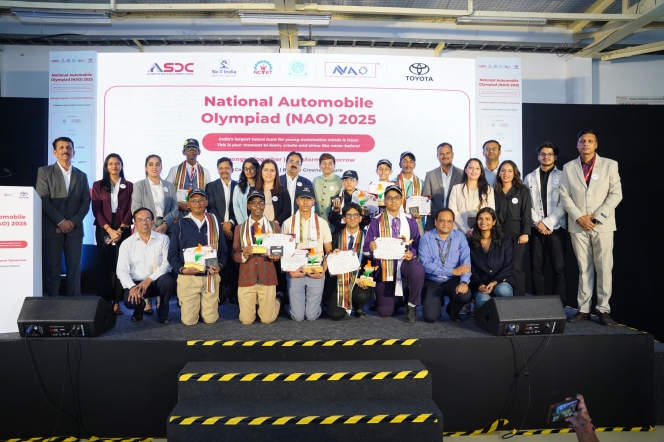
The Automotive Skills Development Council (ASDC), in collaboration with the Central Board of Secondary Education (CBSE) and Toyota Kirloskar Motor (TKM), concluded the National Automobile Olympiad (NAO) 2025. The event took place from 17–19 December at Toyota’s manufacturing facility in Bidadi.
The initiative, aligned with the Skill India Mission, is designed to introduce school students to careers in the automotive and mobility sectors. The Olympiad saw participation from 175 students in Classes VI to XII. These participants were selected from an initial pool of over 136,000 students from schools across India and the UAE.
The three-day event included:
- Industry Masterclasses: Sessions led by experts on automotive fundamentals and emerging technologies.
- Technical Challenges: Competitions covering robotics, welding precision and technical problem-solving.
- Future Mobility Modules: Exposure to hybrid vehicles, data science and AR/VR tools.
- Industry Immersion: Visits to the Toyota manufacturing plant, the Toyota Technical Training Institute (TTTI) and test-track experiences.
The Olympiad concluded with the announcement of winners across three categories:
|
Category |
1st Place |
2nd Place |
3rd Place |
|
Grades 6–8 |
Abeer Verma (Bhopal) |
Aaradhy Pradhan (Ghaziabad) |
Dakhsh Kumawat (Indore) |
|
Grades 9–10 |
Anchit Sahai (Maharashtra) |
Arjun Annamalai (Chennai) |
Mahatva Jain (Jaipur) |
|
Grades 11–12 |
Nishanth Sudhakar (Chennai) |
Vidhan Herpalani (Dubai) |
Punith Kumar (Bengaluru) |
Dr Biswajeet Saha, Director, Training & Skill Education, CBSE, said, “We are delighted to see Toyota Kirloskar Motor hosting National Automobile Olympiad, which perfectly aligns with CBSE’s vision of experiential and skill-based learning. Events like this provide students with invaluable exposure to real-world automotive excellence and industry best practices. They also bridge the gap between classroom learning and practical application, inspiring young minds.”
Vinkesh Gulati, Chairperson, ASDC, said, “National Automobile Olympiad is a powerful platform to spark curiosity and channel young talent toward the automotive sector. ASDC is committed to building a future-ready workforce, and collaborations such as this with Toyota Kirloskar Motor provide students early exposure to real-world industry practices. The enthusiasm and technical aptitude displayed by participants reaffirm our belief in India’s next generation of mobility professionals.”
G Shankara, Executive Vice-President, Toyota Kirloskar Motor, stated, “We are proud to collaborate with ASDC in nurturing young minds through NAO 2025. By offering experiential learning and access to world-class skilling infrastructure, we aim to inspire students to innovate and contribute meaningfully to the future of mobility while supporting the Skill India vision.”
The programme concludes a cycle of assessments and training intended to bridge the gap between academic learning and industrial application in the automotive sector.
- SIAM
- Society of Indian Automobile Manufacturers
- National Road Accident Reduction Challenge 2026
- Safe Journey
- Prashant K Banerjee
- Devashish Handa
- Suzuki Motorcycle India
SIAM Launches National Road Accident Reduction Challenge 2026 For Students
- By MT Bureau
- December 23, 2025

The Society of Indian Automobile Manufacturers (SIAM) has launched the National Road Accident Reduction Challenge 2026 under its ‘Safe Journey’ initiative. The competition invites undergraduate students across India to develop solutions aimed at improving road safety and reducing fatalities.
The challenge targets undergraduate students in teams of two to four. Participants are required to submit field-tested or ready-to-implement ideas across several themes:
- User-centric interventions
- Technology-driven safety
- Infrastructure improvement
- Evaluation and enforcement
Submissions must include a 15–20 slide concept deck backed by data validation, fieldwork, or prototypes. The deadline for nominations is 15 January 2026, with final projects due by 1 March 2026.
Shortlisted teams will present their projects to a jury consisting of representatives from SIAM, vehicle manufacturers (OEMs), transport authorities and NGOs. The winning team will be awarded a cash prize of INR 250,000 at the SIAM SAFE Annual Convention 2026.
Prashant K Banerjee, Executive Director, SIAM, said, “In India, around 485 people lose their life daily due to road accidents. India’s young minds have the power to drive real change on our roads. The National Road Accident Reduction Challenge 2026 is designed to channel their creativity, problem-solving skills, and sense of responsibility into practical interventions that can be implemented on the ground. By engaging students as partners in road safety, SIAM aims to foster a culture of accountability, innovation, and safer mobility for the nation.”
Devashish Handa, Executive Officer, Suzuki Motorcycle India (SMIPL), said, “Road safety is a key focus area of Suzuki Motorcycle India’s CSR efforts. We believe that student-led innovation can contribute meaningfully to safer mobility in India. Through SIAM’s National Road Accident Reduction Challenge 2026, we aim to strengthen road safety ethics among the young generation and encourage practical, on-ground interventions to help bring down road fatalities.”
- Hyundai Motor Company
- ICC
- International Cricket Council
- Hyundai Motor India
- Jay Shah
- Tarun Garg
- Jose Munoz
Hyundai Motor Becomes ICC Premier Partner For 2026–2027 Tournaments
- By MT Bureau
- December 23, 2025
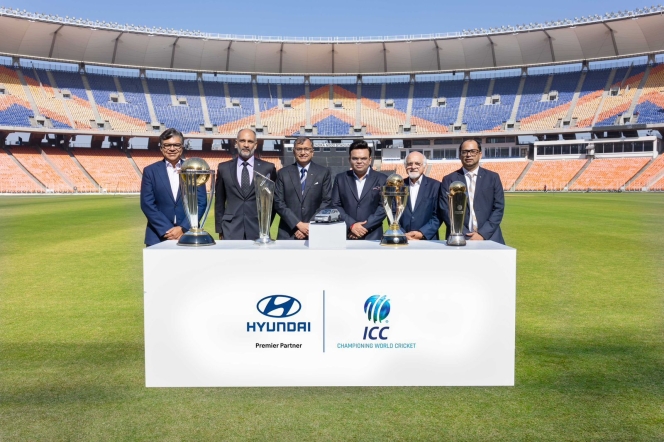
South Korean automotive major Hyundai Motor Company has announced a partnership with the International Cricket Council (ICC), serving as a Premier Partner for tournaments between 2026 and 2027. The agreement covers six major ICC events across multiple formats, including the Men’s Cricket World Cup 2027.
The partnership grants Hyundai exclusive rights for the international cricket calendar. These include participation in matchday moments such as the coin toss, in-stadium branding and fan experiences.
The collaboration aligns with Hyundai Motor’s sports strategy, which focuses on sports in specific regions. Cricket has an audience of over 2 billion fans, providing the brand with a platform to connect with audiences in markets such as India. This deal marks a return to the sport for Hyundai, which previously collaborated with the ICC from 2011 to 2015.
Hyundai subsidiaries will collaborate to offer vehicle showcases, interactive zones and digital engagement initiatives during matches. The partnership was announced at the Narendra Modi Stadium in Ahmedabad, India.
Jose Munoz, President and CEO, Hyundai Motor Company, said, "Cricket and Hyundai share a relentless drive to improve and the resilience to rise to every challenge. We are honoured to partner with the ICC and connect with over two billion passionate fans worldwide. In key markets like India, where cricket is a way of life, this partnership deepens our connection with the customers and communities who inspire everything we do. We look forward to creating memorable experiences together at these iconic tournaments."
Jay Shah, Chairman, ICC, said, "Cricket is among the world's most popular sports, with over two billion fans whose passion is especially evident during ICC's marquee events. These global events offer an excellent opportunity to engage fans through innovative digital and in-stadium integrations. We welcome Hyundai as a Premier Partner and look forward to delivering outstanding events together. Hyundai is a global brand that has long supported sports, and we look forward to maximising our combined strengths at these events."
Tarun Garg, Managing Director & CEO Designate, Hyundai Motor India, said, "This partnership reflects Hyundai's strong commitment to India and growing importance of India market in Hyundai's global operations. We look forward to some thrilling cricketing action and are ready with a 360-degree communication approach across PR, digital, experiential and dealerships to maximise this opportunity across the country."
Schaeffler India Announces Winners Of 4th Social Innovator Fellowship
- By MT Bureau
- December 22, 2025
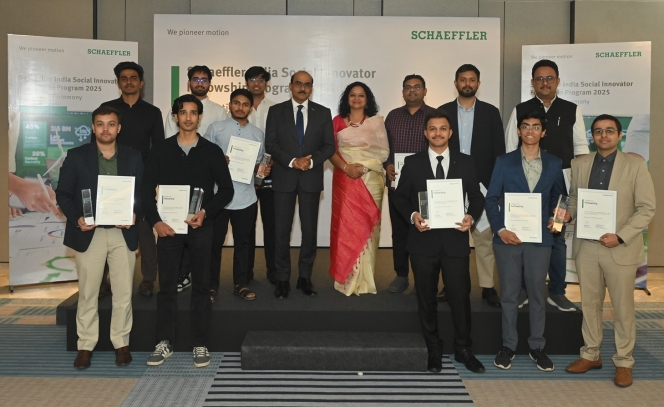
Schaeffler India, a motion technology company, has named the winners of the 4th edition of its Social Innovator Fellowship Programme. The initiative identifies and supports individuals aged 18–35 developing solutions for environmental and societal challenges.
The programme focuses on several key areas, including environmental sustainability, renewable energy, carbon neutrality, the circular economy and natural resource management.
Following a screening process and prototype demonstrations, 10 projects were selected from 172 eligible applications. Each winner received a grant of INR 175,000.
The winners will also participate in a 24-week hybrid mentorship programme at IIMA Ventures, part of the Indian Institute of Management Ahmedabad. This phase provides tools, frameworks and expert mentoring to prepare the solutions for the market and assist in scaling their impact.
Since July 2025, the programme received more than 460 registrations from 21 states across India, including Maharashtra, Karnataka, Tamil Nadu and Delhi. Out of these, 103 applicants were shortlisted for final assessment.
Harsha Kadam, MD and CEO, Schaeffler India, said, “Change is the only constant. In a dynamic world where environment and technology play a fundamental role to meet the evolving needs of the world’s populus, the Social Innovator Fellowship Program speaks volumes of Schaeffler’s commitment to ESG and building not just a technologically advanced business model but be sensitive to the environment we operate in. It is our commitment to building a sustainable future that drives us to keep supporting this program year on year. With the response rates from participants growing over the years it’s overwhelming to see the indomitable spirit where technology and human consciousness collaborate to build a better world."
"We are happy that program is designed to identify and empower young changemakers who are developing scalable, impactful, and technology-driven solutions. In doing so, Schaeffler aims to harness entrepreneurial spirit and provide a platform where innovators can translate their ideas into transformative actions that make a sustainable impact on society,” added Kadam.
The award ceremony featured representatives from academia and the development sector, including Professor Gurudas Nulkar from the Gokhale Institute of Politics and Economics, Munish Bhatia of India Accelerator, Dr Bharat Kakade from the BAIF Development Research Foundation and Ankur Sohanpal of IIMA Ventures.



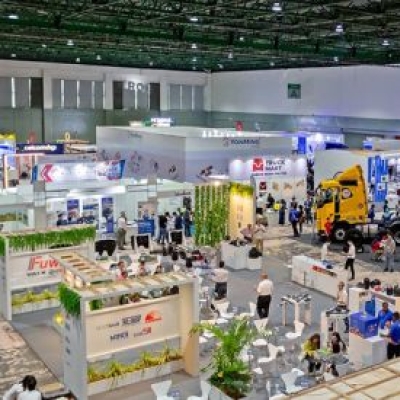


Comments (0)
ADD COMMENT